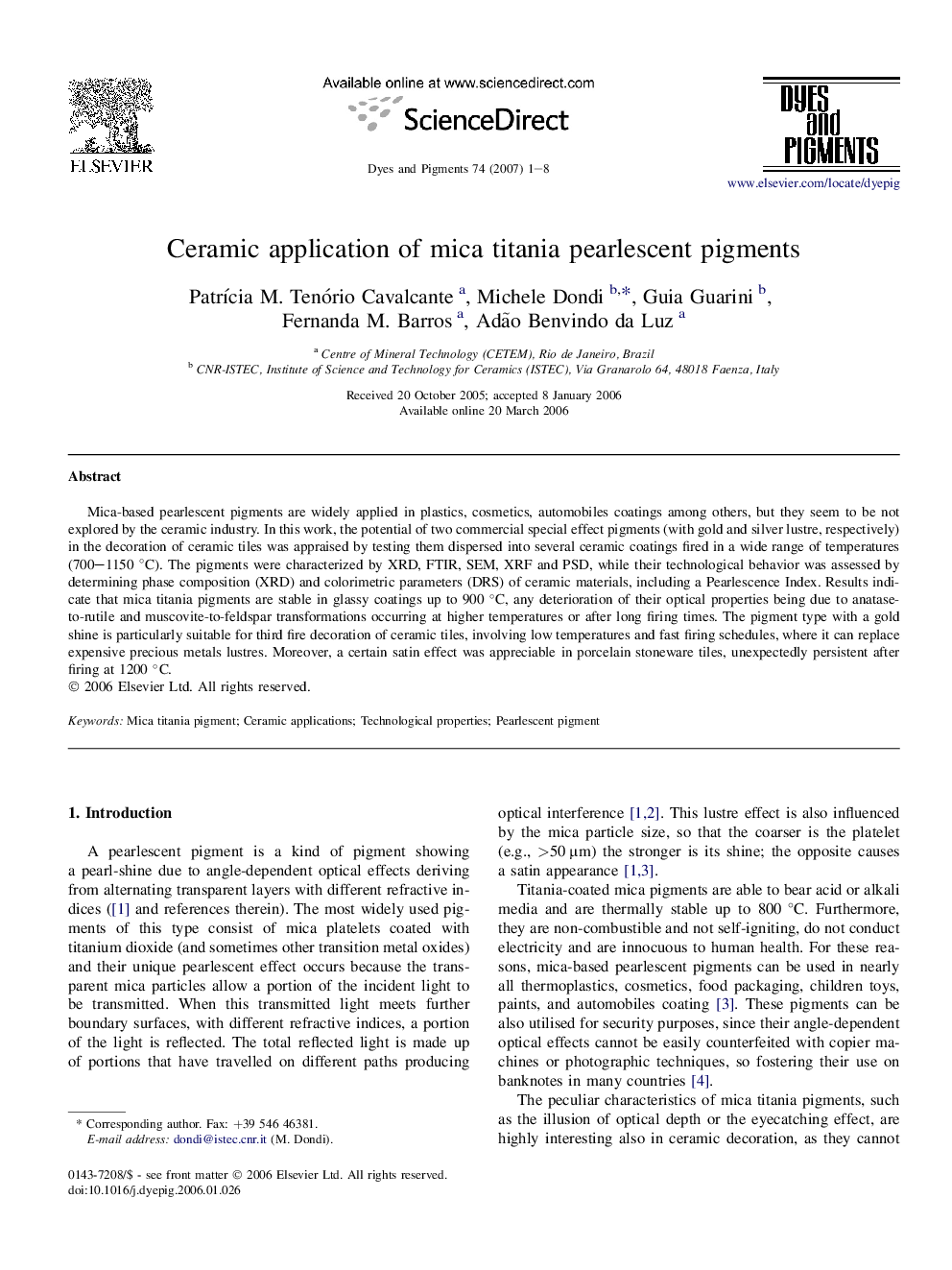| Article ID | Journal | Published Year | Pages | File Type |
|---|---|---|---|---|
| 178230 | Dyes and Pigments | 2007 | 8 Pages |
Mica-based pearlescent pigments are widely applied in plastics, cosmetics, automobiles coatings among others, but they seem to be not explored by the ceramic industry. In this work, the potential of two commercial special effect pigments (with gold and silver lustre, respectively) in the decoration of ceramic tiles was appraised by testing them dispersed into several ceramic coatings fired in a wide range of temperatures (700–1150 °C). The pigments were characterized by XRD, FTIR, SEM, XRF and PSD, while their technological behavior was assessed by determining phase composition (XRD) and colorimetric parameters (DRS) of ceramic materials, including a Pearlescence Index. Results indicate that mica titania pigments are stable in glassy coatings up to 900 °C, any deterioration of their optical properties being due to anatase-to-rutile and muscovite-to-feldspar transformations occurring at higher temperatures or after long firing times. The pigment type with a gold shine is particularly suitable for third fire decoration of ceramic tiles, involving low temperatures and fast firing schedules, where it can replace expensive precious metals lustres. Moreover, a certain satin effect was appreciable in porcelain stoneware tiles, unexpectedly persistent after firing at 1200 °C.
